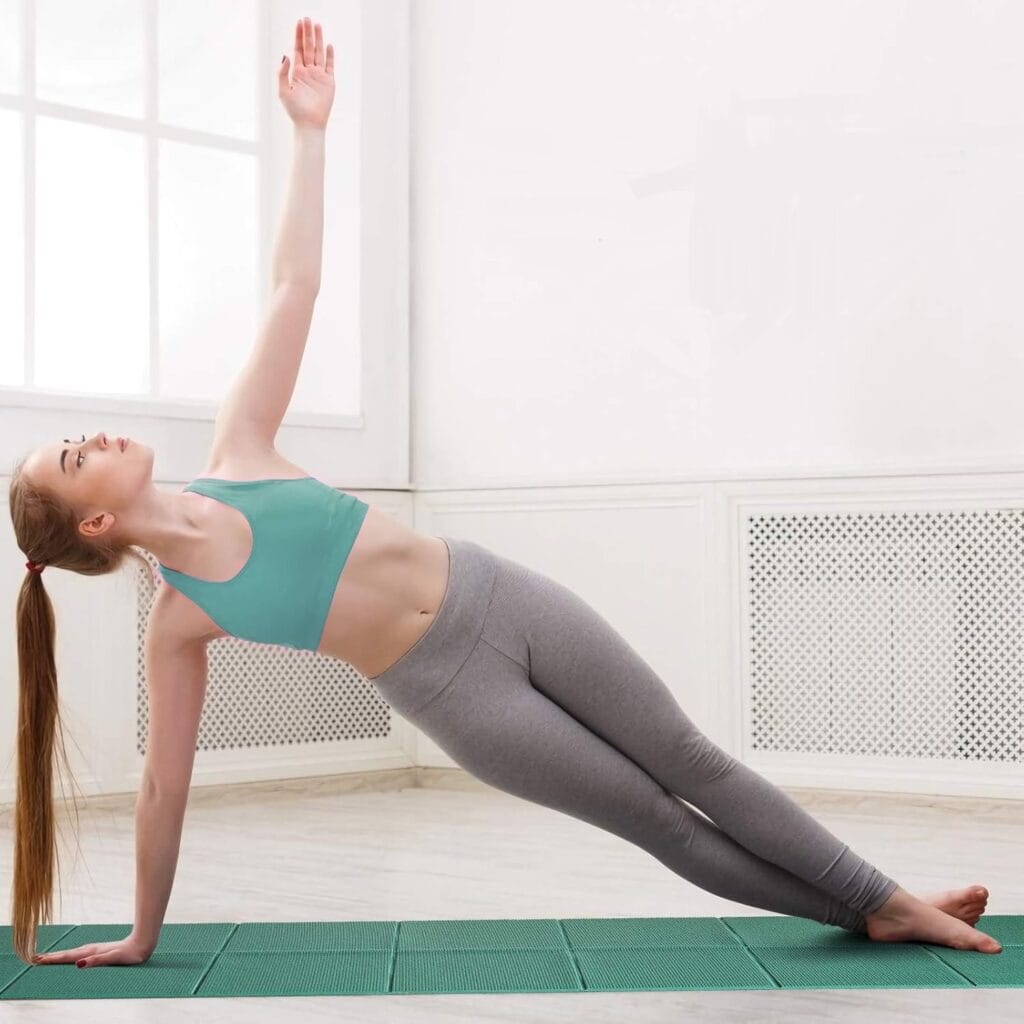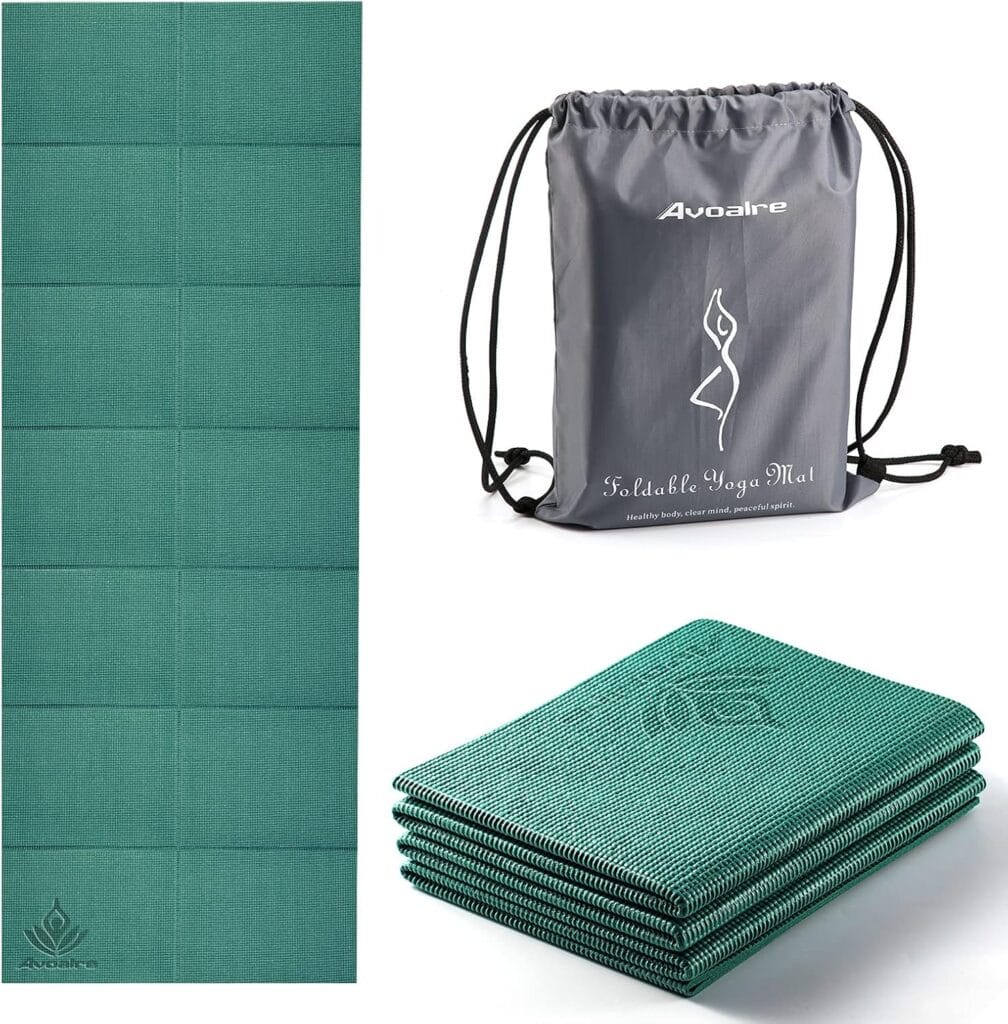*This article contains affiliate links*
As we age, maintaining flexibility and mobility becomes increasingly important. For those over 40, stretching is more than just a quick warm-up or cool-down; it’s a vital practice that can help prevent injuries, reduce pain, improve posture, and enhance overall well-being. Incorporating both static and dynamic stretching into your daily routine can make a significant difference in how you feel and move.
What exactly are the benefits of these two types of stretching, and how can you make the most of them? Let’s explore how stretching can help you stay active, healthy, and pain-free as you get older—and why using the right equipment, like a good mat, can elevate your stretching routine.
The Benefits of Stretching Over 40
As our bodies age, we naturally lose flexibility and muscle elasticity. Stretching helps counteract these changes by keeping muscles long, lean, and flexible. Here are some key benefits of regular stretching, especially for those over 40:
- Improved Flexibility and Range of Motion: Regular stretching helps maintain and improve flexibility, which is essential for a full range of motion in the joints. This is particularly important as we age, when stiffness can become more pronounced.
- Injury Prevention: Stretching helps warm up muscles, increasing blood flow and preparing them for activity. This can significantly reduce the risk of injuries, such as muscle strains or sprains, by keeping muscles flexible and responsive.
- Reduced Muscle Pain and Tension: For those who experience tightness or soreness, especially in the back, neck, or legs, stretching can help relieve muscle tension and reduce pain. Stretching encourages better blood circulation, which helps remove waste products like lactic acid from muscles.
- Enhanced Posture and Alignment: Stretching helps correct muscle imbalances and improves posture, which is particularly important for people who spend long hours sitting or standing. Good posture not only reduces strain on muscles and joints but also supports overall spinal health.
- Mental Relaxation and Stress Relief: Stretching is not just about physical benefits; it can also provide mental relaxation. By focusing on breathing and gently elongating the muscles, stretching helps reduce stress and promote a sense of calm.
Static vs. Dynamic Stretching: What’s the Difference?
To maximise the benefits of stretching, it’s essential to incorporate both static and dynamic stretching into your routine. Here’s a quick breakdown of each type and how they contribute to your fitness:
- Static Stretching: Involves holding a stretch for a prolonged period, usually 15-30 seconds. This type of stretching is best done after a workout when your muscles are warm, or during a cooldown phase. Static stretches help to elongate the muscle, increase flexibility, and improve overall relaxation. Examples include hamstring stretches, calf stretches, and shoulder stretches.
- Dynamic Stretching: Involves moving parts of your body and gradually increasing reach, speed of movement, or both. These stretches are more active and are typically done before exercise to help increase blood flow, warm up the muscles, and improve performance. Examples of dynamic stretching include leg swings, arm circles, and torso twists.
How to Incorporate Stretching into Your Routine
To get the most out of your stretching routine, it’s important to use the right techniques and equipment. A good-quality mat can make a big difference in your comfort and safety while stretching.
Why a Good Mat Matters: Using a mat like the Avoalre Foldable Non-Slip Yoga Mat can enhance your stretching experience. Here’s why:
- Cushioning and Support: The mat provides a comfortable, cushioned surface that reduces pressure on your joints, such as your knees, elbows, and spine, during floor stretches.
- Non-Slip Surface: With its non-slip design, this mat ensures stability and safety, preventing slips or falls while performing stretches, especially dynamic movements.
- Portability: The foldable and portable design makes it easy to carry around, so you can maintain your stretching routine at home, in the park, or at the gym.
- Durable and Eco-Friendly Material: The mat is made from eco-friendly materials, making it a sustainable choice for your fitness needs.
Top Stretching Tips for Those Over 40

- Warm Up First: Before stretching, ensure your muscles are warm to avoid injury. A light jog, brisk walk, or dynamic stretching routine can help.
- Breathe Deeply: Remember to breathe deeply and steadily while stretching to maximise oxygen flow to your muscles.
- Don’t Overstretch: Stretch to a point of mild discomfort, not pain. Overstretching can cause muscle damage.
- Stay Consistent: Make stretching a daily habit to maintain flexibility and mobility.
- Use the Right Equipment: A good mat, like the Avoalre Foldable Non-Slip Yoga Mat, can provide the necessary support and comfort to help you stretch safely and effectively.
Take Care of Your Body with Stretching
As you move past 40, stretching becomes an essential part of maintaining a healthy, active lifestyle. Whether you’re doing static or dynamic stretches, the key is consistency and using the right tools. A good mat can be your best companion in this journey, offering comfort, support, and safety as you stretch your way to better health.
Get started with the Avoalre Foldable Non-Slip Yoga Mat today and make stretching a daily habit that your body will thank you for!
Stretch regularly, stay active, and enjoy the benefits of a more flexible, healthy body well beyond your 40s!



